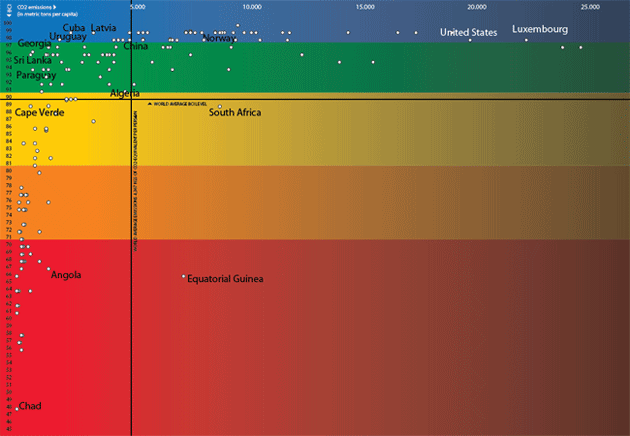The world turns right instead of moving up
With carbon dioxide emissions of three tons of per capita a year, Costa Rica and Uruguay have managed to lower their infant mortality to the same level of a country that emits twenty tons a year: the United States. At the same time, with the same level of emissions than Norway, South Africa has a set of social indicators similar to that of Indonesia, which consumes five times less fossil fuels.
The notion that eradicating poverty and reaching basic dignity for all requires a model of development that destroys the environment is wrong. The leaders of the world made that point in Rio twenty years ago at the “Earth Summit” and stated that “the major cause of the continued deterioration of the global environment is the unsustainable pattern of consumption and production, particularly in industrialized countries (...) aggravating poverty and imbalances”.
Between 1990 and 2000 the world’s index of basic capabilities improved five points (from 79 to 84) while the world per capita emissions of CO2 actually decreased from 4.3 tons to 4.1. In the first decade of the XXI century, world CO2 emissions moved up to 4.6 tons per capita but the social indicators only moved up 3 points. In spite of the declared commitment with poverty eradication and the Millennium Development Goals, the year 2000 was a turning point for the worse: social progress slowed down while environmental destruction accelerated.
